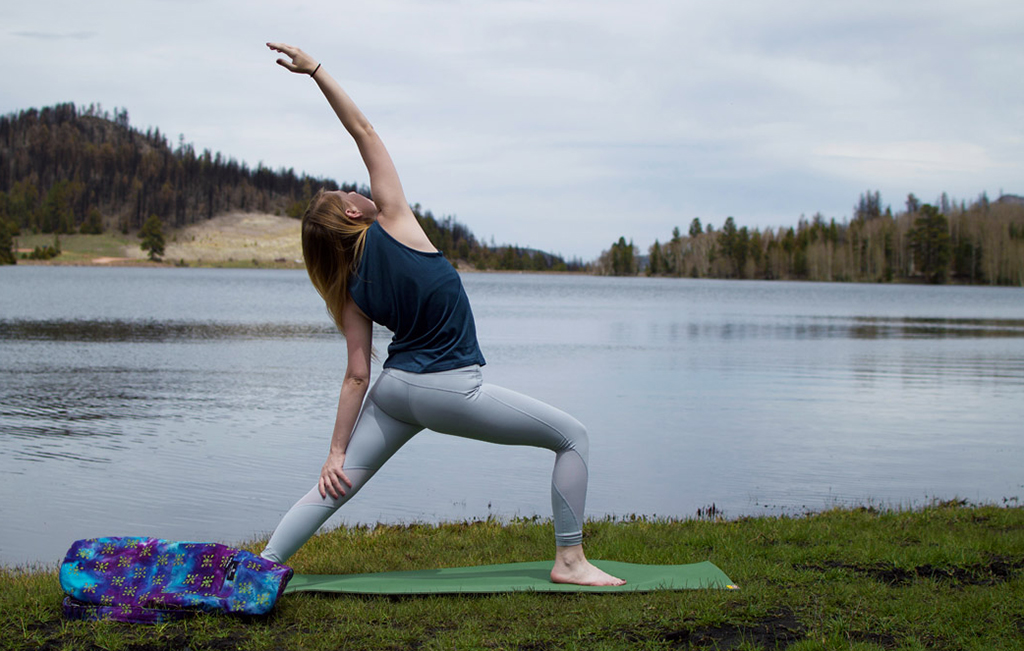
Here in Utah, we’re nearing the end of another Sundance Film Festival marathon. For years I volunteered for the festival. It was lots of fun, and I got to see lots of great films. But when my schedule changed and I could no longer fit in the four-hour shifts, I had to try a different strategy. So I got the Salt Lake City locals pass. This means I can go to any of the films showing on five screens around the city.
Seeing brand-new films, especially the stellar and always informative documentaries, is exciting. And when the directors and film subjects show up for a post-screening Q & A, you get to delve deeper into the behind-the-scenes nuts and bolts of the film’s origins and evolution. And I get to meet a whole lot of great people—people who love independent film as much as I do—standing in line or sitting in the audience.
On the down side, it’s a LOT of sitting. Too much sitting, in fact. And the theater seats are not ergonomically designed. Like car seats and airplane seats, there’s zero lumbar support. In fact, most seats are molded to cause lumbar flexion. At last evening’s 9:00 pm film—my second film in a row—my back was so sore that I was in constant squirming mode.
Of course, most of us sit too much in our daily lives anyway, without having to spend hours in theater seats. That’s just the nature of the work most of us do. In some ways, sitting has become the new smoking. Studies show that hazards of too much sitting include poor posture, obesity, metabolic syndrome, back problems and chronic pain.
Yoga Has a Remedy
To be sure, there are lots of yoga poses that help relieve back pain from too much sitting. Pretty much any gentle, mindful yoga practice will help unwind back tension. But I’ve found that even a short practice will help, as long as you include these elements. A sequence for relieving back pain should include all the various movements that the spine is capable of:
- Flexion – bending forward
- Extension – bending backward
- Rotation – twisting
- Lateral bending – side bending
- Axial extension – lengthening
The Importance of Standing Poses
In my experience, the most important back pain-relieving poses are the wide-legged standing poses—poses such as Trikonasana (Triangle Pose), Parsvakonasana (Side Angle Pose) and Virabhadrasana I and II (Warrior I and II Poses). In a workshop titled “Spinal Integration” I attended with Donna Farhi, she spoke about the importance of practicing standing poses for back health:
“You can work indirectly into the axial skeleton (the spine, skull and pelvis) through the appendicular skeleton (the limbs). The reason the standing postures are so powerful in this regard is that many of the poses keep the spine in a relatively neutral position. That is, the posture is not in and of itself demanding to the back. Yet in that neutral position one can move force from the ground through the legs into the spine, in the same way that water moves through a hose. When the impulse from the legs is transferred clearly into the pelvis and then into the spine, the impulse itself acts to open and clear the spine, in the same way that a high-pressure flow of water can clear a blockage in a hose.”
So, not only do standing poses help you expand the arms, legs, shoulders and hips after too much sitting, but they also energize the spine. Standing poses are varied enough that if you practice a variety of standing poses, you can move the spine in all its potential directions.
Standing Poses and Spinal Movements
While all yoga asanas move the spine in one or more of the above directions, wide-legged standing poses do this more gently, and with strong support from the legs. Some poses combine spinal actions. Here’s a list of spinal movements and the wide-legged standing poses that promote them:
- Flexion: Prasarita Padottanasana (Wide-Legged Standing Forward Bend), Parsvottanasana (Pyramid Pose)
- Extension: Virabhadrasana I (Warrior I Pose), Viparita Virabhadrasana (Reverse Warrior Pose)
- Rotation: Trikonasana (Triangle Pose), Parsvakonasana (Side Angle Pose), Parvrtta Trikonasana (Revolved Triangle Pose), Parvrtta Parsvakonasana (Revolved Side Angle Pose)
- Lateral: Viparita Virabhadrasana (Reverse Warrior Pose)
- Axial extension: Virabhadrasana II (Warrior II Pose), Virabhadrasana III (Warrior III Pose), Parsvottanasana (Pyramid Pose), Trikonasana (Triangle Pose), Parsvakonasana (Side Angle Pose), Ardha Chandrasana (Half Moon Pose)
Almost all of the standing poses can promote axial extension if we are practicing with the intention of lengthening the spine in mind.
So if too much sitting is causing back pain or fatigue, try sequencing a practice that includes at least one standing pose from each of the above categories. Then, of course, cool down with a few seated or supine twists and forward bends and a generous Savasana (Relaxation Pose).
